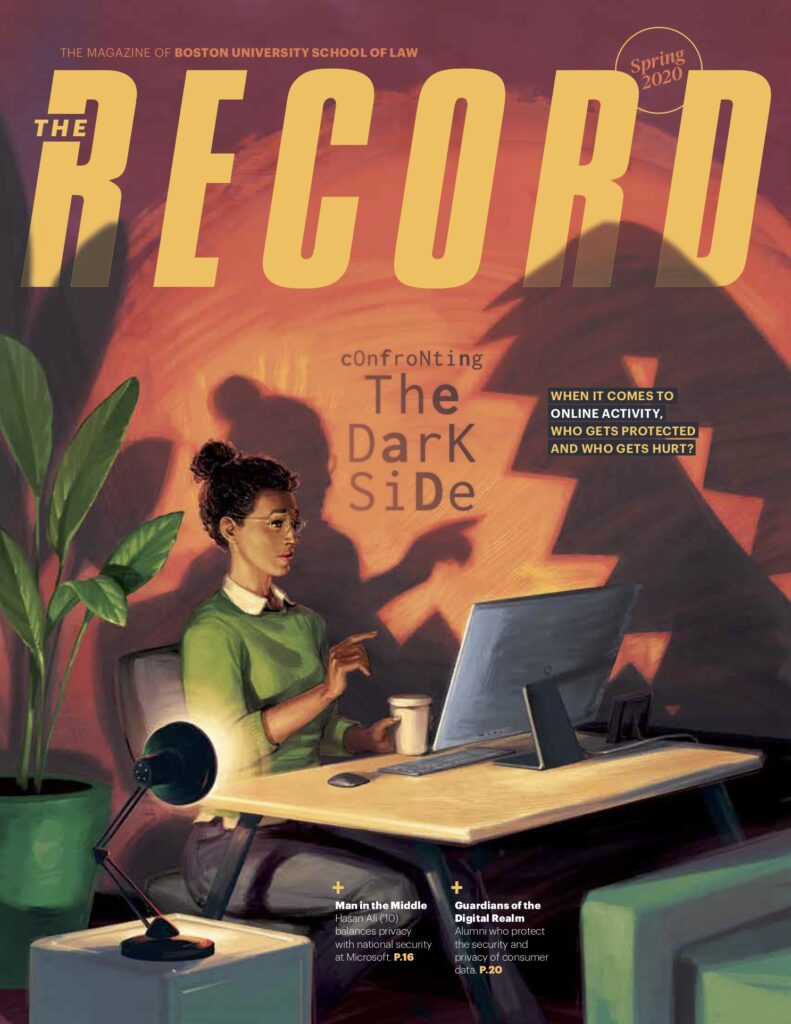Celebrating 50 Years with the Civil Litigation Program
Under Bob Burdick’s leadership, the program has shaped the careers of generations of lawyers.

Celebrating 50 Years with the Civil Litigation Program
Under Bob Burdick’s leadership, the program has shaped the careers of generations of lawyers.
“The civil litigation clinical program under Bob Burdick’s leadership was the best, most educational, and most inspirational part of my BU Law experience. Hands down!”
The above quote comes from Thomas Sobol (’83), who has built a national reputation in mass torts by winning more than $2 billion in verdicts and settlements against the tobacco and pharmaceutical industries.
Sobol may be one of the more prominent graduates, but he is far from alone in his praise of BU Law’s Civil Litigation & Justice Program.
Jade Brown (’16) has taken a different route, working on the front lines of the Boston housing crisis as an attorney at Greater Boston Legal Services, which also serves as the home base for the Civil Litigation & Justice Program. She explains that rapid gentrification and rising rents have generated a wave of evictions, often from apartments that families have lived in for more than a decade.
For Brown, the clinical program complemented the academic side of her law school education.
“It gave me an opportunity to see how lawyering works in the real world,” she says. “Law school is about learning legal theory and best practices. As a practicing attorney, you’re deciding between practical versus ideal strategies all the time.”
Founded in 1969 in a Jamaica Plain storefront, the program has grown from a single supervising attorney to five attorneys overseeing 34 students a year. This academic year, the program celebrated its 50th year of providing courtroom experience to future lawyers who represent the indigent population of Greater Boston in housing, divorce, employment discrimination, disability, and domestic violence cases.
It gave me an opportunity to see how lawyering works in the real world. Law school is about learning legal theory and best practices. As a practicing attorney, you’re deciding between practical versus ideal strategies all the time.
The program has blossomed under the guidance of Clinical Professor Bob Burdick (’72), who has served as its director for the last four decades.
“The value of this program is that it’s real,” says Burdick. “Having that type of professional responsibility is transformative—it certainly was for me.”
Burdick enrolled in the program as a second-year law student in 1970.
“I loved it so much, I reoriented my law school experience from the classroom to working on real cases,” he says.
Burdick worked at Greater Boston Legal Services for several years before returning to BU Law as acting director of the program in 1977 and director in 1979.
Since that time, students have worked on many high-profile cases, including Mills v. Rogers (1982), which went all the way to the US Supreme Court and helped establish the right of committed mental patients to refuse antipsychotic medication.
More recently, Zaheer Samee (’06) argued a housing case before the Massachusetts Superior Court as a third-year law student.
He lost. But a year later, as an attorney in private practice, he appealed that case—DiLiddo v. Oxford Street Realty (2007)—to the state Supreme Judicial Court, which unanimously ruled in his client’s favor.
Burdick emphasizes that even the routine cases can be career-changing experiences for students.
“Most students are not coming from the same kind of environment as their clients,” says Burdick. “They’re seeing an aspect of life they’ve never seen before.”
For Brown, the program—and BU Law in general—provided her with the tools she needed to make an impact on the world.
“As an undergraduate, I studied journalism because I loved to hear people’s stories,” she says. “Now when I listen to a person’s story, I can tell them that they have legal rights and help them rewrite that story. I can make a real difference in the lives of my clients.”
